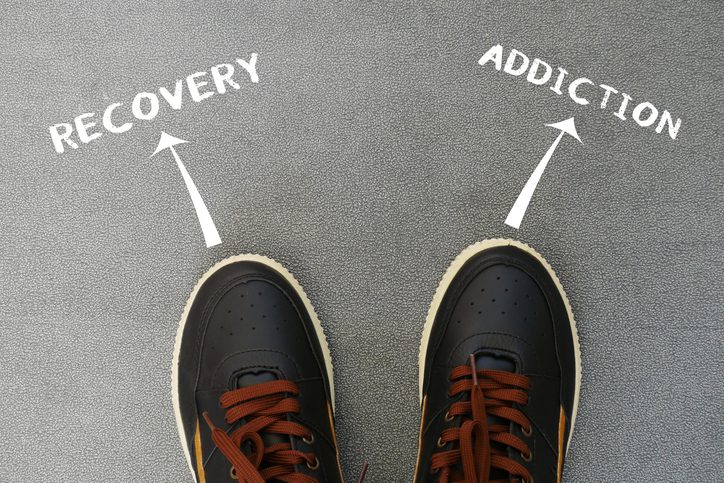There are a lot of famous pathways out there, some real, some fictional. Route 66. The yellow brick road. The path from the Shire to Mordor. The Bajoran wormhole to the Gamma Quadrant. The bridge to Terabithia. The Oregon Trail. The proposed hyperspace byway that led the Vogons to destroy the Earth. You get the idea.
And, of course, there are plenty of more mundane paths in our lives. The route you take to work. The personal shortcuts you use to walk from here to there and back again. The cross-country combination of roads that leads to your in-laws’ place.
In this blog post, we want to take you down two paths—one that leads to a place no one wants to go and one that leads you away from that same place.
First up: The path that leads to the development of a substance use disorder.
The Path to Addiction
Here are five steps that point you toward a substance use disorder:
- The First Use and Pattern Development: The path begins with the first use of a substance. Whether it is a prescription drug, a legal drug, alcohol, or an illicit substance, the first step often leads to the intention to keep the positive feelings coming.
- Continued Steady Use: The established pattern soon becomes regular, steady substance use. In fairly short order, there may be an increase in risky behavior, including driving under the influence, reckless sexual choices, getting into fights.
- Tolerance: Regular drug use leads to increased tolerance for the substance being ingested. That means it takes more of the drug to have the same effects it had originally. Mental, physical, and emotional issues continue to worsen—especially since you are now taking more of the substances.
- Dependence: It is a short step from tolerance to dependence. By now it is difficult to function if you don’t have ongoing access to drugs or alcohol. Cravings get worse, and withdrawal symptoms—often severe and even dangerous—arise if you go any length of time without the substances.
- Addiction: At this point, it is wholly possible that you no longer even enjoy the way drugs or alcohol make you feel. But you will likely feel powerless to stop taking those substances. You might lose your job or leave school or damage your key relationship and more—and your physical and mental well-being will continue to collapse. If you don’t make a change at this point, there is a good chance you have arrived at the end of the line.
Fortunately, there is a path back to sobriety—no matter where you are on the path we have just described.
The Path to Sobriety
Here are five steps that can point you back toward sobriety:
- Pre-contemplation: In the early going, a person using problematic substances may honestly believe they do not have a problem. After all, you might not have experienced any consequences yet. Maybe you believe you are in control. This stage ends when you realize that something needs to change.
- Contemplation: The good news is that at this point you are thinking about addressing the situation. The bad news is that you probably aren’t actually doing anything about it just yet. This period can last a long time, but eventually the appeal of life without dependence on drugs or alcohol can lead you to the next stage.
- Preparation: By now, you may be searching for an appropriate inpatient recovery center or other program. You may well be looking forward to restarting your life free from the influence of drugs or alcohol. This preparation and anticipation can quickly lead to the next all important step.
- Action: Once you enter a treatment center for detoxification and rehabilitation, the work of recovery is underway. While in treatment, you will learn strategies, coping skills, and healthy approaches to life that will help you maintain your sobriety over time. You will leave treatment in possession of information, encouragement, and ongoing support to help prevent a relapse as your recovery journey gets underway.
- Maintenance: Avoiding relapse is the key part of the final step on this path. Taking advantage of resources like 12-Step programs and making needed changes in your life to avoid the triggers that led to addiction are key steps on your new path. After all, now that you have come so far on this journey back to sobriety, you definitely do not want to head down the wrong path again. If, however, you do experience a relapse, the path back to sobriety remains open to you, and you can reclaim your sobriety again.
If You Are Struggling, Let Your Path Lead You Here
At The Farley Center—located in Williamsburg, Virginia—we are committed to helping individuals overcome substance use disorders and co-occurring mental health disorders. We provide personalized care grounded in evidence-based approaches to treatment that take into account your physical, emotional, and psychological needs. When you are ready to make a positive change that will restore your hope and quality of life, we are ready to help you get on the right path.


